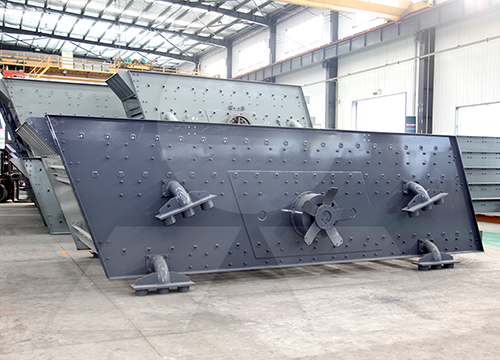Advantages of Using Vibrating Screens in Industrial Applications
Vibrating screens are essential in many industrial processes, offering a range of advantages that enhance productivity and efficiency. These screens are widely used in industries such as mining, construction, agriculture, and recycling, due to their ability to separate, classify, and filter materials efficiently.
High Screening Efficiency
One of the primary benefits of vibrating screens is their high screening efficiency. These machines can handle large volumes of material with high speed and precision, ensuring that the desired particles are separated effectively. The vibration motion facilitates the movement of materials across the screen, preventing clogging and ensuring continuous operation. This efficiency is crucial in industries where large-scale processing and high throughput are required, such as mining and construction. The high efficiency of vibrating screens leads to better product quality and more consistent output.
Versatility in Material Handling
Vibrating screens are highly versatile and can process a wide variety of materials, from fine powders to large rocks. This versatility makes them suitable for numerous industrial applications, including the separation of minerals, sand, gravel, and other bulk materials. Different screen designs and configurations can be used to accommodate specific material characteristics and processing requirements. For instance, in the recycling industry, vibrating screens are used to sort and classify different types of waste materials, ensuring efficient recovery and reuse. This adaptability enhances the operational flexibility of vibrating screens, making them valuable assets in various industrial processes.

Durability and Low Maintenance
The durability of vibrating screens is another significant advantage. Constructed from high-quality materials and designed to withstand harsh operating conditions, these screens offer long service life and reliable performance. The robust construction minimizes wear and tear, reducing the frequency of maintenance and repairs. Furthermore, the design of vibrating screens allows for easy access to components, simplifying maintenance procedures and reducing downtime. This durability and low maintenance requirement result in lower operational costs and higher efficiency over the long term, making vibrating screens a cost-effective solution for industrial applications.
Improved Material Quality
Using vibrating screens in industrial processes can significantly improve the quality of the final product. The precise separation and classification capabilities ensure that only particles of the desired size and shape are included in the output. This level of control is essential in industries such as pharmaceuticals, food processing, and chemical manufacturing, where product purity and consistency are critical. The ability to remove impurities and oversize particles enhances the overall quality and value of the product, meeting industry standards and customer expectations.
Energy Efficiency
Vibrating screens are designed to operate efficiently, consuming less energy compared to other types of screening equipment. The vibration mechanism allows for effective material movement and separation with minimal power input. This energy efficiency contributes to lower operating costs and reduces the environmental impact of industrial processes. In an era where sustainability and energy conservation are becoming increasingly important, the use of energy-efficient equipment like vibrating screens is a significant advantage.
Customization and Scalability
Another notable advantage of vibrating screens is their customization and scalability. These screens can be tailored to meet specific operational needs, with various sizes, capacities, and screening patterns available. This customization ensures optimal performance for different applications and material types. Additionally, vibrating screens can be easily scaled up or down to match changing production demands, providing flexibility and adaptability for industrial operations. This scalability is particularly beneficial in industries experiencing fluctuating market demands or growth, allowing them to adjust their processes without significant investment in new equipment.
Conclusion
In conclusion, vibrating screens offer numerous advantages in industrial applications, including high screening efficiency, versatility in material handling, durability, low maintenance, improved material quality, energy efficiency, and customization. These benefits make vibrating screens indispensable in industries such as mining, construction, agriculture, recycling, and many others. By enhancing productivity, reducing operational costs, and ensuring high-quality output, vibrating screens play a crucial role in optimizing industrial processes and meeting the demands of modern production environments.
- > The Application of Jaw Crushers for Coal Crushing in Indonesia
- > Applications of Mobile Dolomite Cone Crusher in Malaysia: A Comprehensive Overview
- > Cost-Effective Cone Crushers for Crushing Stone: A Key Solution in the Mining Industry
- > High-Efficiency Jaw Crusher for Coal and Basalt in Indonesia
- > Advantages of Mobile Jaw Crusher in Construction Waste Recycling
- > Optimizing Raw Material Grinding Size and Feed Capacity in Ball Mills
- > Applications and Advantages of Jaw Crushers in South American Mining Operations
- > The Role of Vibrating Screens in Iron Ore Processing Plants
Hot Product


Online




Message
